Knowing “what is an emission test and how to prepare your car for it” are essential for passing this environmental compliance check. This article cuts through the confusion, offering a clear definition and a list of practical steps to ready your car for the test. Equipped with this knowledge, you can approach the testing center with assurance.
Key Takeaways
Emissions tests are regulatory measures to ensure vehicles meet EPA air quality standards by analyzing pollutants such as CO, HC, CO2, and NOx in the exhaust.
Vehicle emissions inspections involve varied tests, including On-Board Diagnostic (OBD) checks for newer cars, tailpipe emissions analysis for older models, and visual inspections to verify emission control components.
To prepare for an emissions test, perform regular vehicle maintenance, address check engine light issues, and consider potential fail points, ensuring your vehicle is in compliance with environmental standards.
Demystifying the Emissions Test: What It Entails
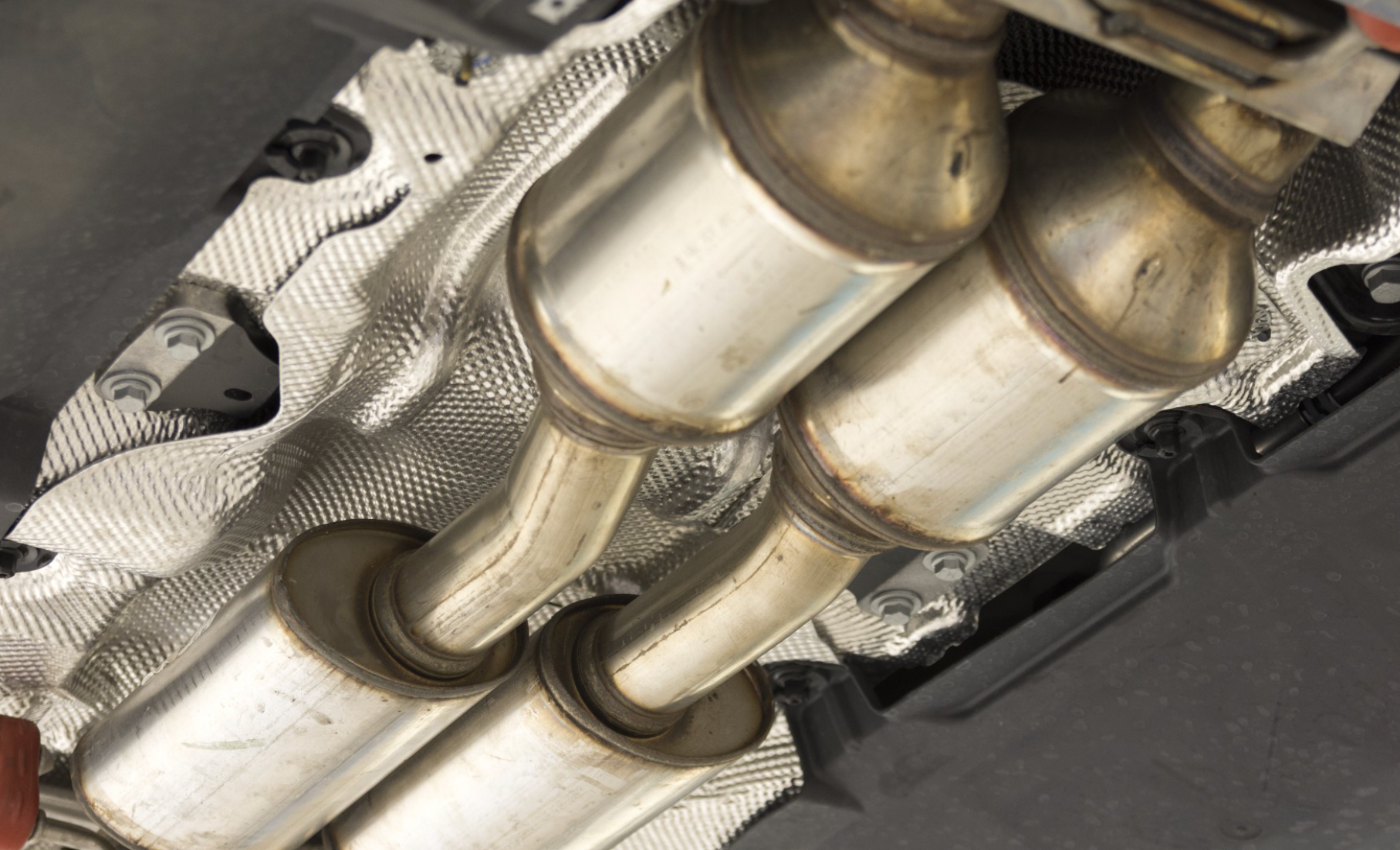
At their core, emissions tests, or smog checks, are a regulatory requirement designed to ensure that vehicles comply with the EPA standards established following the 1990 amendment to the Federal Clean Air Act. So, what’s the goal here? These tests aim to identify vehicles that contribute excessively to air pollution, thereby necessitating repairs to adhere to EPA environmental standards and improve air quality.
During the vehicle emissions inspection, a vehicle’s exhaust emissions are put under the microscope. The test analyzes the exhaust for polluting substances, primarily including:
carbon monoxide (CO)
hydrocarbons (HC)
carbon dioxide (CO2)
nitrogen oxides (NOx)
other pollutants
By catching these pollutants, the test helps ensure that our motor vehicles are not harming our environment more than necessary and contributes to reduce air pollution.
The Inner Workings of an Emissions Inspection
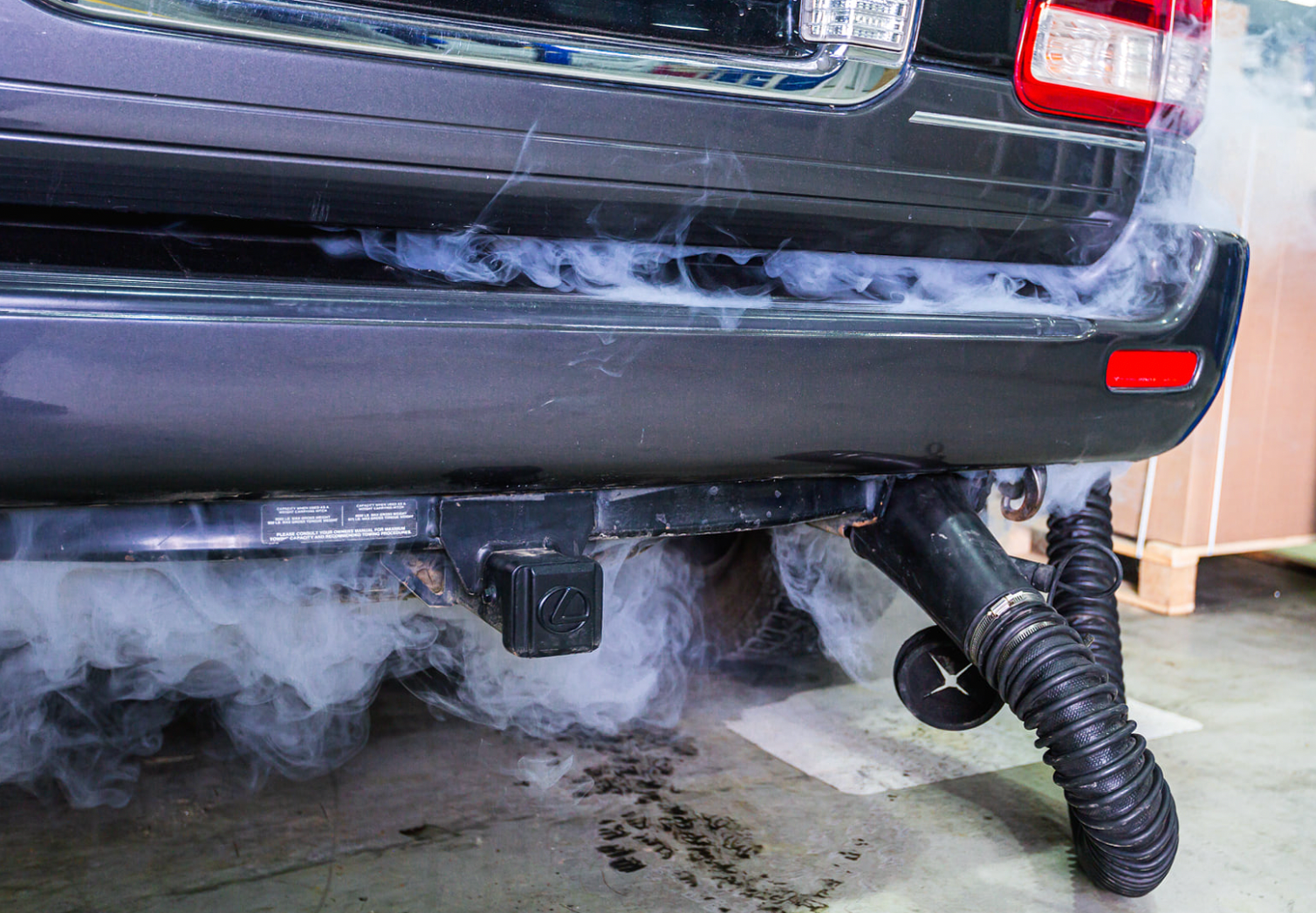
Having established what an emissions test is, we can now explore its mechanics. Emissions inspections utilize various tests to measure pollutants and identify issues. The type of test conducted often depends on the vehicle’s make, model, and age.
We will now dissect the various types of emissions inspections within the context of an inspection program.
On-Board Diagnostics (OBD) Systems
First up, the On-Board Diagnostic (OBD) inspections. These are typically conducted on newer vehicles – 1996 and newer light-duty gasoline vehicles and 1997 and newer light-duty diesel powered vehicles, including light trucks, to be precise. The OBD systems monitor engine components to ensure proper functioning and to detect malfunctions that can increase pollutant emissions.
During emissions inspections, technicians perform both a visual and functional OBD check. This involves verifying that the warning light is operational and obtaining fault information from the vehicle’s on-board computer. Vehicles subjected to the On-Board Diagnostic Inspection System (OIS) do not undergo the ASM tailpipe test, which includes most gasoline-powered vehicles from the year 2000 and newer, as well as 1998 and newer diesel vehicles and all hybrid vehicles.
Tailpipe Emissions Analysis
Next, we have tailpipe emissions testing. This type of test is primarily used for vehicles that do not have modern OBD II systems, usually older models. The Two-Speed Idle (TSI) test, for example, measures exhaust emissions at both high and low idle speeds and is generally reserved for older vehicles without advanced emissions control systems.
Another common test is the Acceleration Simulation Mode (ASM) test. This measures tailpipe emissions under simulated speeds and loads on a dynamometer, offering a controlled method to replicate real-world driving conditions. Vehicles from model years between 1996 and 1999 undergo both OBD inspections and tailpipe emissions testing as part of emissions control programs.
Visual Inspections and Additional Tests
Last but not least, we have visual inspections and additional tests. During an emissions inspection, these tests verify the presence of emission control components, including:
Catalytic converters
Air pumps
Positive crankcase ventilation systems
Evaporative control systems
The components checked comprise:
Catalytic converter
Exhaust gas re-circulation (EGR) valve
Positive crankcase ventilation (PCV) valve
Fuel inlet restrictor
Air pump
Muffler
Tailpipe
Evaporative control system components
If any emissions control components fail the visual inspection, repairs or replacements must be completed for the vehicle to pass the required emissions inspection and the emissions test.
Preparing Your Vehicle for Emission Testing
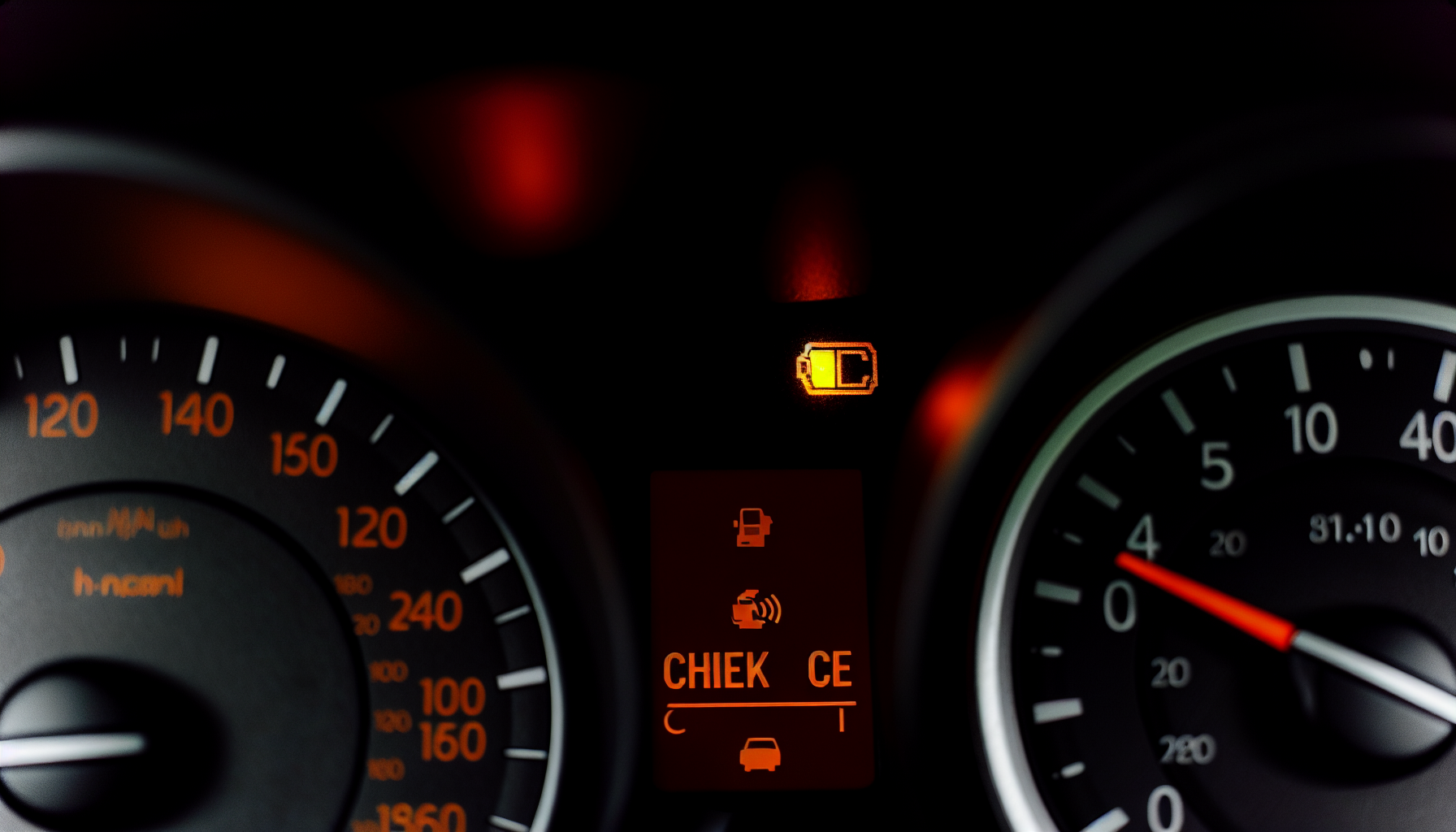
Having discussed the intricacies of an emissions test, we can now turn our attention to preparing your vehicle for it. Proper vehicle maintenance, addressing check engine light issues, and following manufacturer recommendations for service intervals can help ensure your car is ready for an emissions test.
We will now explore these preparation steps in more detail.
Check Engine Light: A Pre-Test Red Flag
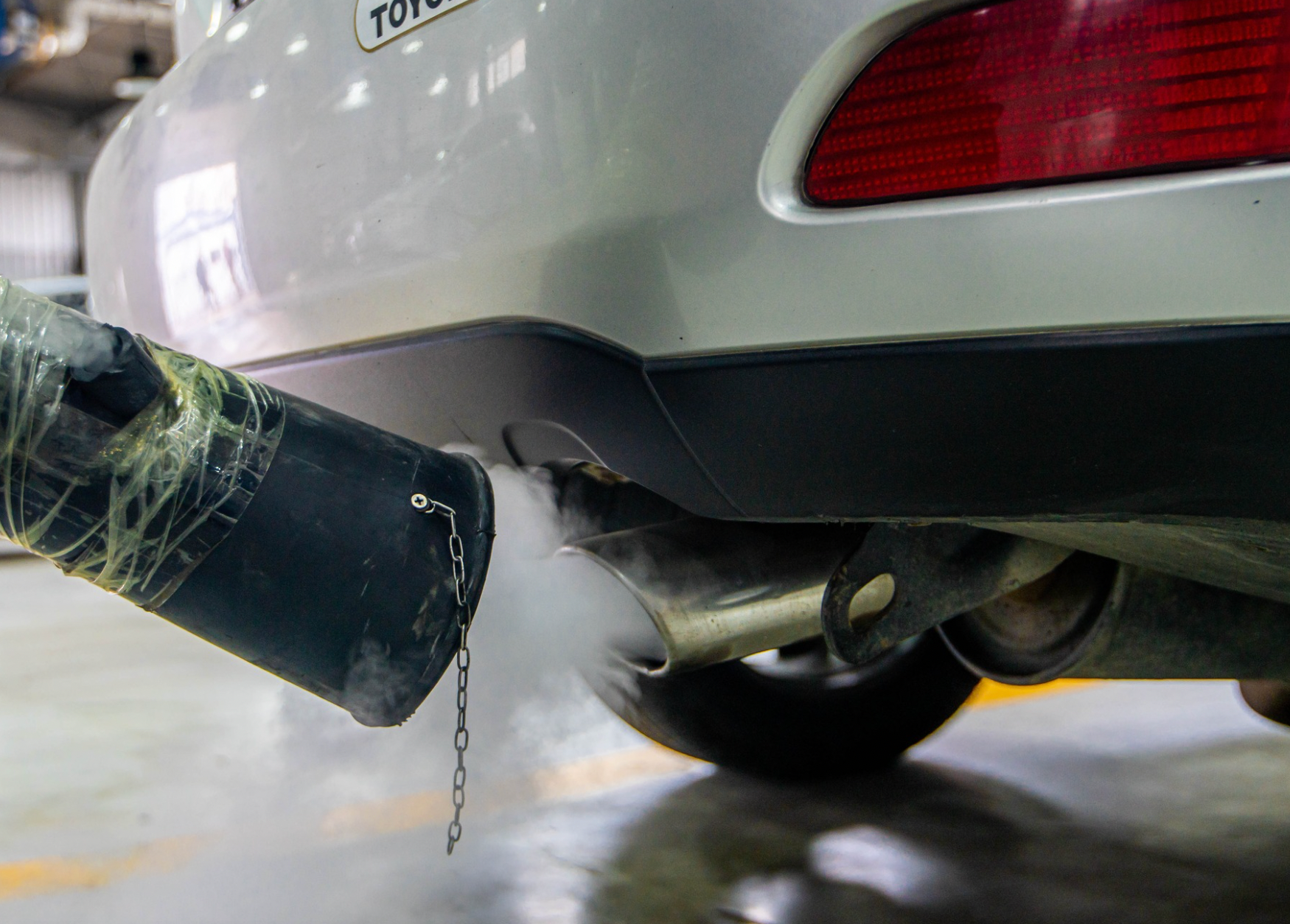
One of the most important things to look out for before an emissions test is the check engine light on your dashboard. When the On-Board Diagnostic (OBD) system of a vehicle detects a problem or malfunction, it triggers this light to notify the driver.
Before an emissions test, it is vital to confirm that this light is not illuminated, as it usually signifies an engine issue that could result in test failure. After addressing the underlying issue that caused the check engine light to turn on, it is important to properly reset the light. Failure to do so is a common reason for vehicles to fail emissions tests.
Maintaining Your Vehicle
Another key aspect of preparing for an emissions test is regular vehicle maintenance. For instance, changing the oil as per the car manufacturer’s recommendation, typically every 5,000 miles, is crucial for smooth vehicle operation and avoiding costly repairs.
Additionally, spark plugs should be inspected and changed roughly every 30,000 miles to prevent engine misfires and maintain efficient operation. The car’s battery should undergo testing twice a year and be inspected for corrosion to prevent failure and avoid the cost of replacement.
Other maintenance activities include:
Checking brake pads for wear and brake fluid with every oil change
Inspecting the vehicle’s suspension system every 15,000 to 30,000 miles
Rotating tires every 3,000 to 5,000 miles
Maintaining the cabin air filter by replacing it every 12 months or 12,000 miles
Monitoring and maintaining the coolant levels twice a year.
Addressing Potential Fail Points
Last but not least, addressing potential fail points can significantly increase your chances of passing an emissions test. Getting a diagnostic test after a failed emissions test can help identify specific emissions control issues such as:
a faulty evaporative emissions control system
fuel metering problems
a failed air injection system
malfunctioning oxygen sensors
a rich fuel mixture
ignition system malfunctions
Changing the vehicle’s dirty oil is a common and often necessary step to help a car pass the emissions retest by preventing issues that can alter the results. Addressing exhaust repairs, especially when experiencing increased engine noise, decreased fuel efficiency, or vibrations, is crucial to resolving emissions problems and passing emissions tests.
When and Where to Get Your Vehicle Inspected
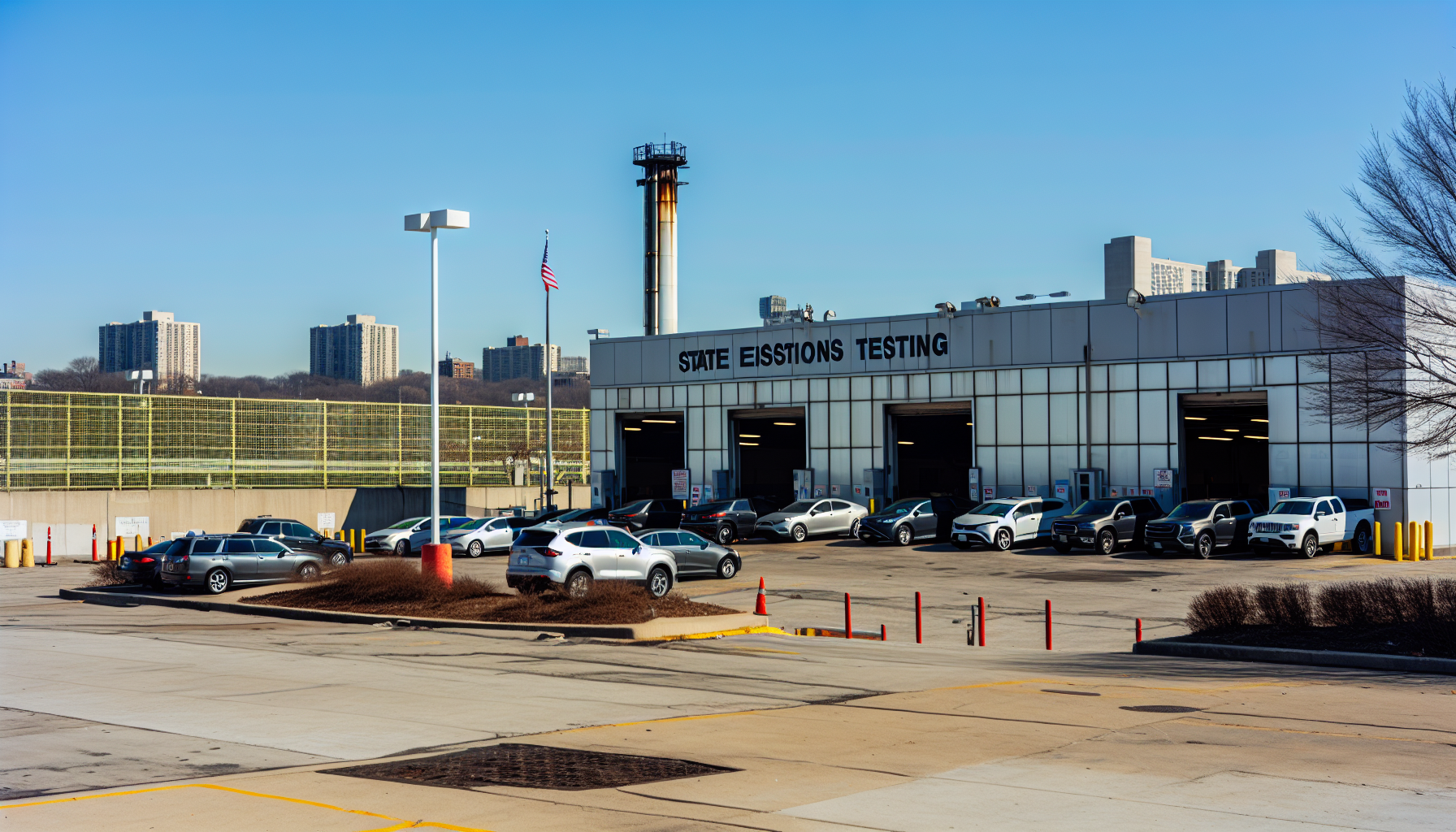
We can now discuss the timing and location for your vehicle inspection. Emissions testing frequency and locations vary by state, so it’s essential to check local regulations and certified testing locations for specific requirements. For example, Illinois law mandates that vehicles undergo emissions testing every two years, which typically applies to vehicles that are four years old or older.
Certified emissions testing locations and current wait times can be found on the Illinois Air Team website or by contacting their call center. After passing the emissions test in Illinois, the vehicle owner is issued a Vehicle Inspection Report required for registration renewal. In some cases, some centralized emissions testing stations also allow you to purchase registration renewal stickers immediately after passing the test.
For new Illinois residents, the emissions test due date is set post vehicle registration, with a notice sent for the initial inspection, including the expiration date. Remember, the frequency of emissions inspections and the specifics of where you can get your vehicle inspected may differ based on your location, so always check your local regulations.
Understanding the Results: Passing or Failing the Emissions Test
Upon completion of the emissions test, it becomes necessary to comprehend the results. Passing the emissions test qualifies a vehicle for legal registration, while failing the test necessitates repairs and retesting before the vehicle can be legally driven and registered.
We will now examine what transpires if your vehicle, with its specific gross vehicle weight rating, either passes or fails the test.
If Your Vehicle Passes
Passing the emissions test is a significant milestone. It signifies that the vehicle is contributing to lower air pollution levels. Vehicle owners who pass the emissions test will face no interruptions in their vehicle registration process.
Successfully passing the emissions test affords both the peace of mind that comes from helping protect the environment and the convenience of uninterrupted vehicle registration. It’s a win-win situation – for both the vehicle owner and the environment.
If Your Vehicle Fails
If a vehicle fails the emissions test, it cannot be legally registered until it meets the required standards. This necessitates repairs, often at state-certified repair locations, to correct issues identified during the emissions test. After repairs are made, the vehicle must pass another emissions test to be legally driven and registered.
On-board diagnostics (OBD) systems help technicians to accurately diagnose and fix emissions-related issues. But what if you’ve reached the maximum expenditure without passing the retest? Certain states, including Illinois, offer hardship waivers for those who cannot afford repairs.
Vehicle owners may also request testing extensions or discuss other options with inspectors if they fail the emissions test multiple times. While failing an emissions test may seem disheartening, remember that there are options available to help you rectify the situation.
Summary
To sum up, emissions tests play a vital role in reducing air pollution and ensuring our vehicles adhere to environmental standards. Understanding the testing process, from the different types of inspections to the key preparation steps, can help both new and seasoned drivers navigate these tests with ease. Remember, maintaining your vehicle and addressing potential fail points is crucial to passing an emissions test. And even if your vehicle fails, don’t despair – there are options available to help you get back on track. Let’s work together to keep our air clean and our vehicles compliant!
Frequently Asked Questions
Is emissions testing required in Texas?
Yes, emissions testing is required for gas-powered vehicles aged 2 through 24 years (or upon expiration of the two-year initial inspection sticker) in Texas, with some exceptions for certain vehicles and counties.
How to pass a Texas emissions test?
To pass a Texas emissions test, be proactive and address any issues with your vehicle before the test, ensure the check engine light is off, and drive your vehicle for 15-20 minutes beforehand. These steps can help you successfully pass the test and meet the emissions requirements.
What do I need to bring to an emissions test in Colorado?
You only need to bring your vehicle for inspection at the Air Care Colorado facility. No paperwork is required.
How do you pass an engine light on an emissions check?
You won’t pass an emissions check with the check engine light on. Get your vehicle repaired before heading to the test to ensure it passes.
Why are emissions tests necessary?
Emissions tests are necessary to ensure that vehicles comply with EPA standards and to identify and address vehicles that contribute excessively to air pollution, ultimately improving air quality for everyone.
